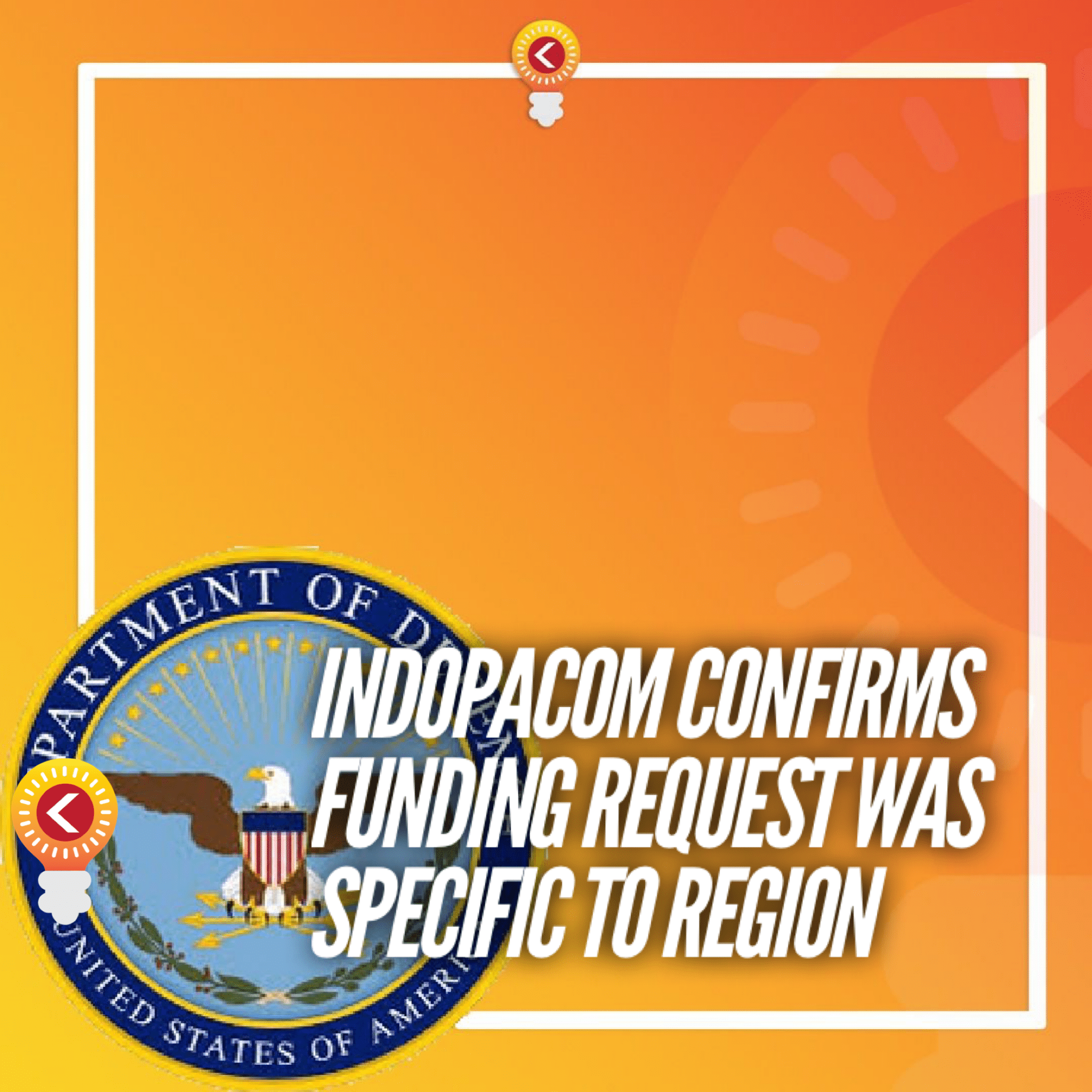The U.S. military’s oldest and largest unified combatant command has confirmed the funding the Department of Defense requested for the Pacific Deterrence Initiative (PDI) is meant for the U.S. Indo-Pacific region west of the International Date Line. The only two inhabited U.S. jurisdictions in that region are Guam and the CNMI.
The U.S. Department of Defense has, for years, seen the threat from the People’s Republic of China “as its preeminent pacing challenge,” according to a March 2023 budget submission for its response to this challenge: the Pacific Deterrence Initiative, or PDI.
According to the report, “a great amount of the Department’s investments and efforts are focused on this threat and strengthening Indo-Pacific deterrence.”
Indeed, over the next five years, DOD plans to spend more than $34 billion in the western portion of the U.S. Indo-Pacific Command (INDOPACOM) area of responsibility.
“The DoD’ Pacific Deterrence Initiative (PDI) highlights investments specifically for the Indo-Pacific region and criteria defined by the DoD,” according to a statement from the U.S. Indo-Pacific Command spokesperson. “The targeted investments DoD underlined in PDI are U.S. force posture, infrastructure, presence, and readiness in the Indo-Pacific region west of the International Date Line (IDL). Some of the investments are for development and integration of a Joint Missile Defense System for the defense of Guam, infrastructure investments in the Pacific, and regional exercises.”
The first wave of that investment was anticipated to cost $9.1 billion for next fiscal year; an amount budgeted by the President.
“To sustain our military advantage over China, it makes major investments in integrated air and missile defenses and operational energy efficiency, as well as in our air dominance, our maritime dominance, and in munitions, including hypersonics,” U.S. Defense Secretary Lloyd Austin III stated in a March 13, 2023 news release about the budget request. “This budget includes the largest ever request for the Pacific Deterrence Initiative, which we are using to invest in advanced capabilities, new operational concepts, and more resilient force posture in the Indo-Pacific region.”
And to remove any question about Guam and the CNMI’s potential share in this one-year $9.1 billion investment to be followed by $25 billion through Fiscal Year 2028, one need only read the next sentence of his statement:
“It also enables groundbreaking posture initiatives in Guam, Mariana Islands, the Philippines, Japan, and Australia.”
Despite the military’s clear outline for the use of funding in this region, the House Armed Services Committee, led by Alabama republican Mike Rogers, inserted a Section 366 to the House-passed version of the National Defense Authorization Act that, if passed into law, likely will expand the area of application of those funds to southeastern states on the other side of the globe.
Guam’s lone non-voting delegate to the House – republican James Moylan – said this addition to the NDAA language does not subtract anything from either Guam or the CNMI.
“Section 366 is additive not subtractive and is intended to ultimately increase DoD’s focus on INDOPACOM not detract from operations already conducted in the region,” Moylan’s communications director Hannah D’Avanzo said.
Nothing in the NDAA the House passed states this. In fact, the Rogers addition to the NDAA broadly defines the geopolitical pivot from INDOPACOM to the southeastern United States in terms of testing or training areas to be funded as including “any range or other facility that may be used by the Secretary of Defense for testing or training purposes.”
Congress often requires studies of the DOD in a fiscal year’s NDAA to provide the data and pave the groundwork for funding the subjects of those studies in the following year’s NDAA. In terms of the PDI and its five-year breakdown of proposed spending, a balance of $25 billion will be left to spend in the four years following the first-year rollout of $9.1 billion in PDI funding.
More startling than Mr. Moylan’s unfounded assertion that Section 366 will not affect Guam or the CNMI’s potential security and economic outlook is his outlook on the matter. According to Ms. D’Avanzo:
“Congressman Moylan’s position on and awareness of Section 366 of the NDAA is that is a positive development for the PDI for three key reasons. First, this amendment allows the Department of Defense (DOD) to conduct training that may otherwise pose harm to the people of Guam in safe geographies elsewhere in the nation. Second, at present Pacific facing jurisdictions such as Hawaii are the primary stakeholders in INDOPACOM related decisions, by expanding this to the south east this makes communities such as HASC Chairman Rogers’ home state of Alabama more deeply invested in the success of INDOPACOM.”
And then, there’s the clincher:

“The congressman did participate in the inclusion of this language into the NDAA, and approved this language for the aforementioned reasons,” Ms. D’Avanzo confirmed.
Meanwhile, the Senate has yet to pass its version of the NDAA; one, which does not include the House’s Section 366 language, at least yet.
Kandit asked Joint Region Marianas, the military command overseeing forces in Guam and the CNMI, whether the military asked the House Armed Services Committee or Mr. Moylan to include this language in the NDAA.
“INDOPACOM implementation of the yet to be enacted Fiscal Year 2024 National Defense Authorization Act is pre-decisional at this time,” part of the INDOPACOM spokesperson’s response states. “DoD will implement the Fiscal Year 2024 National Defense Authorization Act once enacted.”
Mr. Moylan’s office has refused to answer a host of follow up questions, including whether the congressman consulted with wither JRM, INDOPACOM, the CNMI’s delegate to the House, the U.S. Marine Corps, or the governor of Guam about this amendment prior to rendering his support for it.
“Please accept my previous answers to your questions as I believe they were quite thorough and will assist you in your story,” Ms. D’Avanzo said in a reply message about that and other follow up questions.




